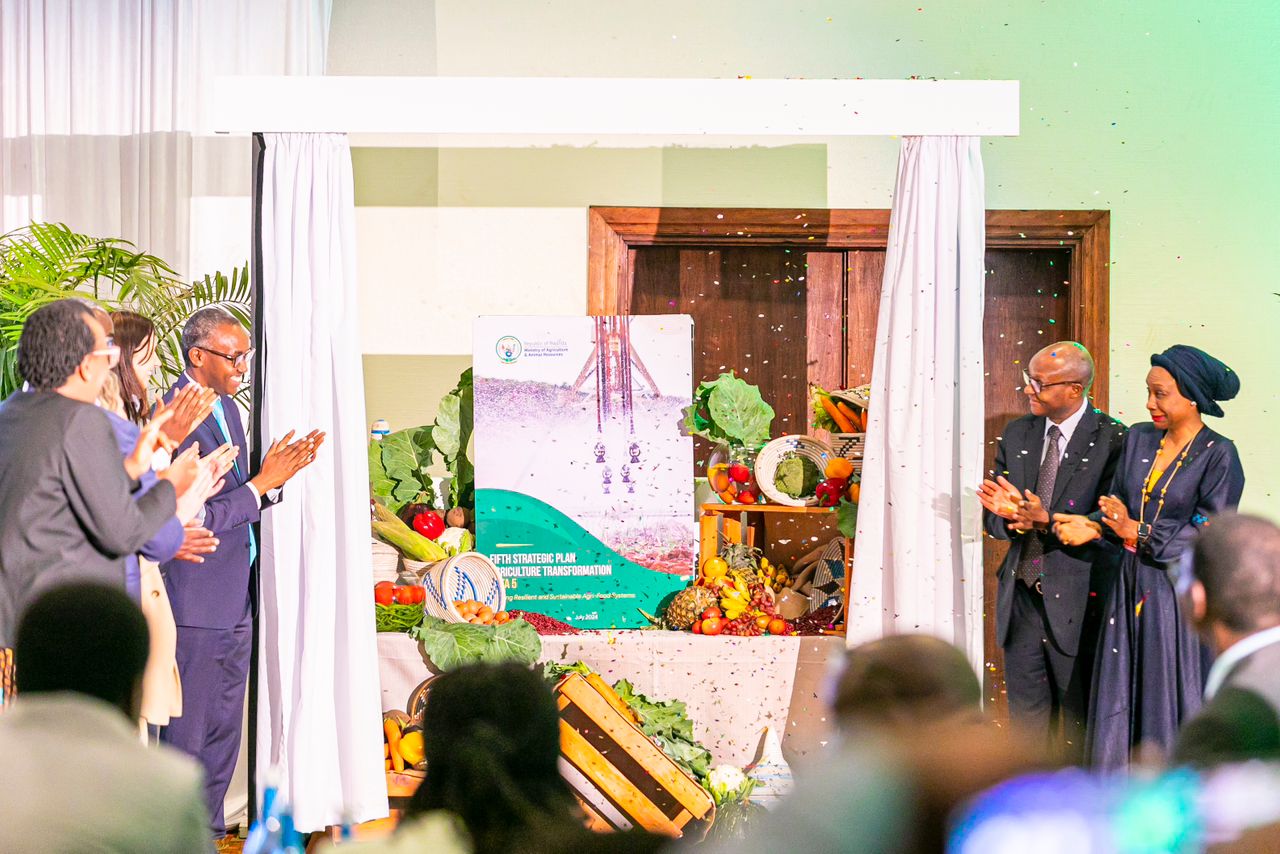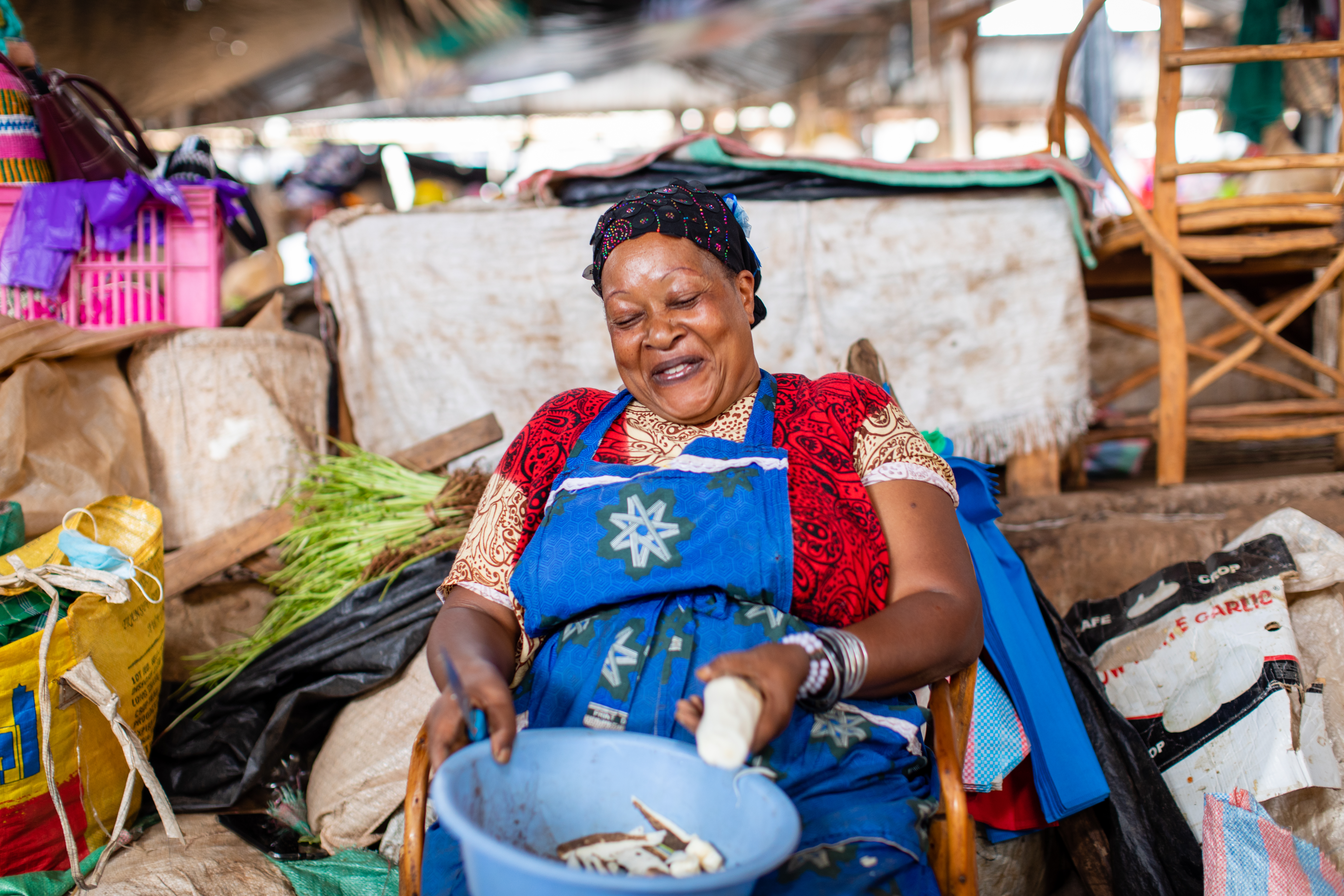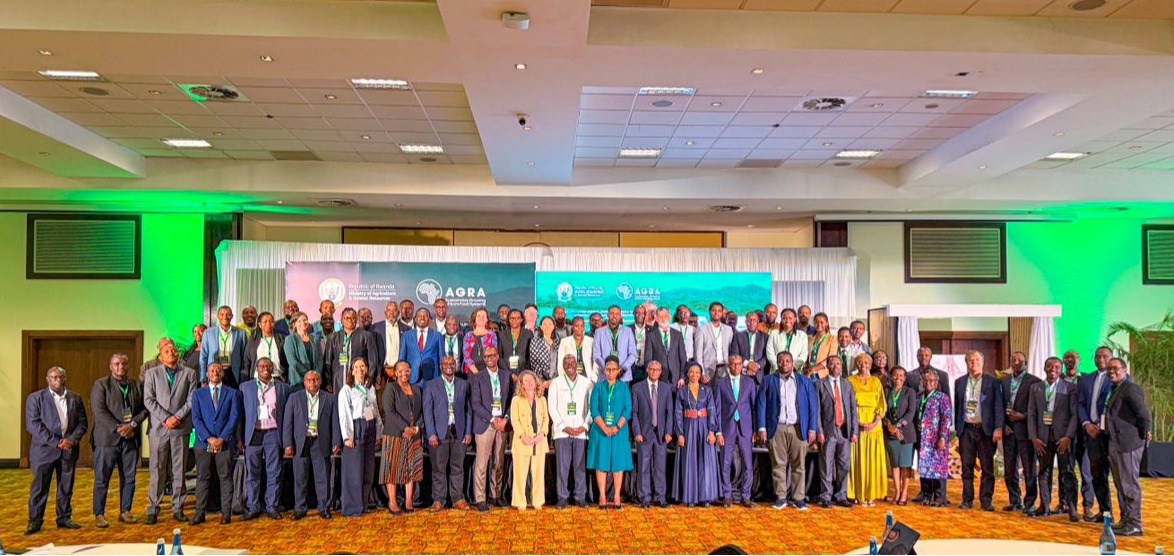Rwanda is writing a new chapter in its journey toward prosperity. A journey rooted in resilience, innovation, and the power of its people. At the heart of this transformation is agriculture: a sector that not only feeds the nation but holds the promise of widespread economic growth, improved nutrition, and environmental sustainability. With the launch of the Fifth Strategic Plan for Agriculture Transformation (PSTA 5) in December 2024, Rwanda has put forward a visionary, five-year roadmap that reimagines food systems as engines of opportunity and wellbeing. More than just a policy framework, PSTA 5 is a call to action to government, investors, farmers, and partners to come together and create a future where every Rwandan has access to nutritious food. The plan arrives at a time of growing momentum. Rwanda has consistently proven its ability to turn bold vision into measurable progress. The country has shown that it can deliver results even in the face of global uncertainty. PSTA 5 builds on this foundation, combining ambition with practical pathways to make agriculture more productive, climate-resilient, and inclusive. There is every reason to believe that Rwanda’s next leap forward will begin in its farms, and food markets. With the right investments, the impact will reach far beyond agriculture, strengthening the nation’s economy, and nourishing its people.

Agriculture remains critical to Rwanda’s economy, contributing 27% to GDP and providing employment to more than two-thirds of the population. Yet, as the country seeks to transform into a knowledge-based, high-income economy by 2050, agriculture must evolve from subsistence and low production and productivity to a modern, climate-smart, and market-driven sector. The stakes are high. Food insecurity remains a persistent challenge, affecting over 20% of households. Stunting still affects nearly one in three children under five years old, and climate-related shocks such as droughts and floods continue to erode hard-won gains. Meanwhile, Rwanda’s population is growing rapidly; projected to grow over 50% from 2025 levels to reach over 22 million by 2050, while land remains scarce and degraded in many areas. It is in this context that PSTA 5 takes on a holistic “agri-food systems” approach. It looks beyond farms to consider the entire value chain, putting nutrition at the heart of the strategy.
A Strategy with a Clear Resource Plan
PSTA 5’s aims are backed by significant investment. The strategy will require an estimated 6,406.5 billion Rwandan Francs (approximately USD 5.2 billion) over five years. This is the largest financial commitment Rwanda has ever made to its agriculture sector. It is also refreshingly open about the need for partnerships: 43% of the financing must come from private sector investment, and development partners are encouraged to co-finance key components. The investment is carefully structured across three priority areas:
- 58% is earmarked for the modernization of agriculture and animal resources, including support for climate-resilient production, irrigation, soil health, and better livestock management.
- 17% will go to building inclusive markets and reducing post-harvest losses.
- 24% is allocated to systems enablers such as research, extension services, digital technologies, and planning capacity.

Using the Strategy as an Investment Tool
PSTA 5 is not just a government plan. It is also an investment tool. The strategy highlights expected returns on investment in both economic and human development terms. For instance, simulations indicate that full implementation could push agricultural GDP growth above 6% and generate more than USD 1.5 billion in agriculture export revenue by 2028/29. These outcomes would mark a substantial leap forward for the sector. Equally compelling are the expected social returns. The strategy aims to reduce stunting from 32% to 15% and increase the country’s food self-sufficiency ratio from 79% to 100%. Employment in the agrifood system is expected to increase by 60%, creating jobs in processing, logistics, trade, and services, particularly for women and youth. These projections make the case for PSTA 5 as a credible investment opportunity for donors, development banks, and private sector. The alignment with the Sustainable Development Goals (SDGs), the African Union’s Agenda 2063, and the Comprehensive Africa Agriculture Development Programme (CAADP) further strengthens its appeal to international partners.
Opportunities for Government, Private Sector, Donors, and Civil Society
One of PSTA 5’s strengths is its clarity on where different actors can plug in. For government, the strategy calls for continued leadership in land use planning, regulatory frameworks, food safety systems, and core infrastructure investments including irrigation and rural feeder roads. The government is also tasked with scaling up nutrition sensitive programs. For the private sector, there are major opportunities in agricultural processing, logistics, digital agriculture, and export value chains. Rwanda’s unique geography and climate allow it to produce high-quality coffee, tea, fruits, and vegetables that command premium prices on global markets and can also feed domestic demand. Agribusiness firms are also well-placed to offer services in crop insurance, mobile credit finance, and input distribution. For donors and development agencies, the entry points are numerous: co-financing infrastructure and services, supporting policy reforms, investing in research and technology, and strengthening the country’s data and monitoring systems. PSTA 5 also welcomes support for gender and youth empowerment, areas where social impact can be immediate and far reaching. Civil society organizations are vital in ensuring accountability, strengthening farmer organizations, and advocating for inclusive policies. They are particularly well positioned to engage women and marginalized communities in shaping the food system of the future.
“I invite all stakeholders – farmers, private sector actors, development partners, nutritionists, and fellow Rwandans – to join us in this transformative journey. Together, we can build an agricultural sector that nourishes our nation, drives our economy forward and creates prosperity and good health for all.” - Mark Cyubahiro Bagabe, PhD. Minister of Agriculture and Animal Resources

Digital innovation is another area where Rwanda is building on successful models. With 85% of Rwandan farmers using mobile phones and over half using mobile payments, the foundation is in place for scaling digital extension, remote sensing, and climate advisory services. The PSTA 5 commits to expanding these services to close knowledge gaps and improve decision-making for smallholders. PSTA 5 agrifood system challenges with foresight. It proposes a scale-up of climate-smart agriculture, improved extension systems, soil conservation efforts, and stronger insurance mechanisms to reduce the risk of investing in agriculture. It also encourages land leasing models to increase productivity among youth and women, who often have less access to land but higher potential for innovation and entrepreneurship. In addition, it envisions a future where Rwandans have consistent access to nutritious, safe, and affordable food. Where rural youth can find meaningful, profitable work in agriculture and food value chains. And where women are full participants in shaping a food system that nourishes both bodies and economies.
PSTA 5 is more than just a strategy. It's an investment guide and a national call to action. Success will require bold investments, innovative partnerships, and relentless focus. But if there’s a country that has proven it can defy odds and deliver inclusive transformation, it's Rwanda.